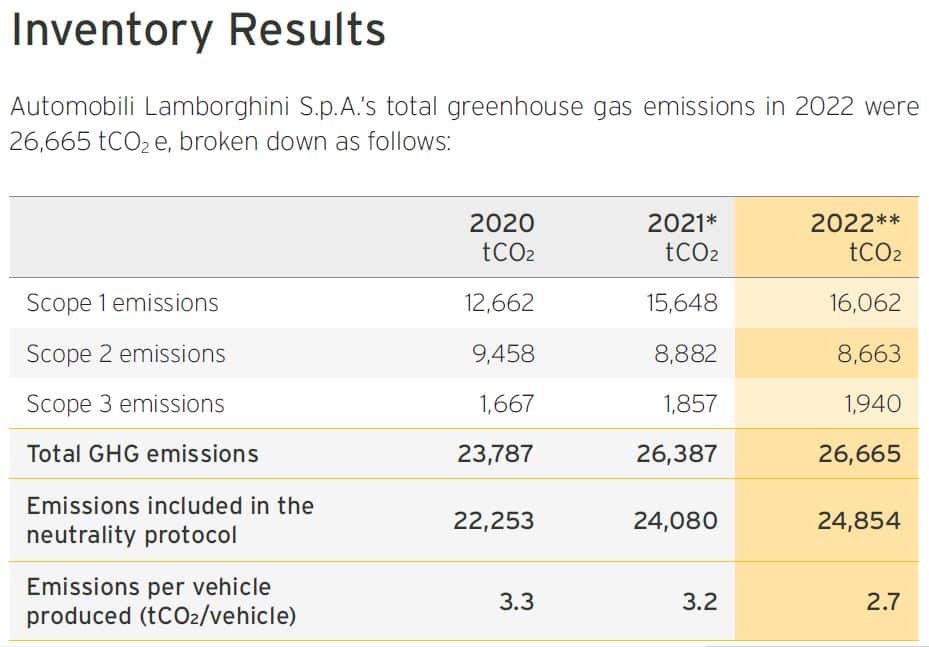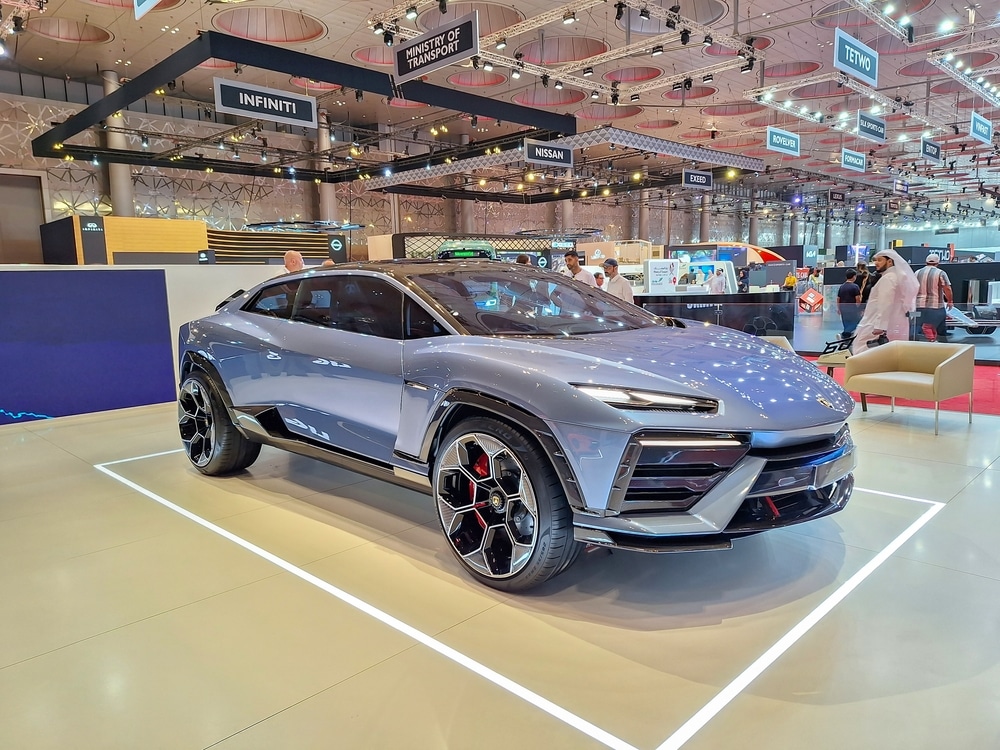Italian supercar maker Lamborghini has revealed its concept EV car Lanzador, which captures and symbolizes its sustainability and carbon emission reduction efforts as part of its “Direzione Cor Tauri” roadmap.
Lamborghini debuted Lanzador at the Monterey Car Week, marking a significant step towards its decarbonization and electrification plans. It is the super sports car brand’s first EV offering, featuring a high ground-clearance GT with 2+2 seats.
Lamborghini’s Sustainability and Carbon Reduction Efforts
Sustainability goes beyond just a buzzword these days and has penetrated all parts of the economy, particularly mobility. Though sports car users have considered electric vehicles unnecessary, supercar manufacturers have joined the global race to net zero emissions.
They have to because of the pressure both from regulators and investors. Lamborghini is the latest to take on the challenge and drive along the road to decarbonization. Under its Cor Tauri strategy launched in 2021, the sports carmaker aims to decarbonize through the following phases:
- Celebrating internal combustion engine (2021-2022)
- Transitioning to hybrid (by the end of 2024)
- Going first full electric (second half of the decade)
The Latin term Cor Tauri means “heart of the Bull” and refers to the brightest star of the constellation of Taurus. It shows the direction Lamborghini is taking towards an electrified future, while remaining faithful to the brand’s heart and soul.
The Italian luxury carmaker has been channeling its efforts on reducing its carbon emissions for years. Lamborghini’s production site in Sant’Agata Bolognese has been certified as carbon-neutral since 2015. Emissions generated in this site are responsible for about 90% of the company’s total carbon emissions included in its inventory.
The following table shows Lamborghini’s greenhouse gas or carbon emissions for the past three years.
 There’s a slight increase in the carmaker’s Scope 1 and 3 emissions, which was compensated by a decline in Scope 2 emissions (electricity use). Scope 1 represents the majority of emissions – 60%, followed by Scope 2 with 33%.
There’s a slight increase in the carmaker’s Scope 1 and 3 emissions, which was compensated by a decline in Scope 2 emissions (electricity use). Scope 1 represents the majority of emissions – 60%, followed by Scope 2 with 33%.
Overall, total emissions increased by over 2% (>400 tCO2) but emission intensity (emissions/vehicle produced) dropped to 2.7 tCO2. That’s an improvement in reductions by over 15% compared to previous year’s intensity.
The company aims to reduce its product carbon emissions by 50% by 2025 and reach carbon neutrality by 2050 for its entire value chain. It has been implementing internal carbon reduction measures while offsetting unavoidable emissions through carbon credits.
- Internal efforts in cutting emissions also resulted in about 44% decrease in 2022 relative to 2014 baseline.
Lamborghini offsets its electricity consumption emissions by purchasing Green Certificates – certifying that energy is from renewable sources. While the remaining emissions are offset by buying carbon credits – each credit representing one tonne of carbon reduction or removal.
These credits are certified and recorded in the Eco2care VER (Verified Emissions Reduction) Registry, managed by CE.Si.S.P. Since 2020, Lamborghini has purchased over 35,600 tCO2 used to offset its emissions.
Now, for its next major decarbonization step, the supercar maker unveiled its first EV concept Lanzador.
Lamborghini’s First EV Concept: Lanzador
The new concept car is part of Lamborghini’s broader strategy to reduce carbon emissions for a more sustainable future. It offers a sneak peek into the carmaker’s future EVs. Remarking on this great milestone, the automaker’s CEO and Chairman, Stephan Winkelmann, said that:
“With this concept, we are ushering in a new car segment, the Ultra GT, which is poised to offer customers a new and unparalleled driving experience, one that’s quintessentially Lamborghini, thanks to groundbreaking technologies.”
The Lanzador embodies its maker’s sustainability efforts, both in its exterior and interior design, performance, and software.
It uses 2 electric motors, one for each axle to ensure permanent all-wheel drive in all conditions and driving styles. Using battery packs instead of burning oil without affecting performance and range is a big plus for the luxury carmaker’s carbon cutting initiatives.
Equipped with all-active control systems, the driver can actively modify the car’s behavior while on the road. Users can personalize their driving profile to best express and suit their driving needs. All thanks to Lamborghini’s “Vision of Smart Aerodynamics” future philosophy, delivering driver requests and range requirements.
Additionally, almost all materials used for the concept car’s interior are sustainable. The use of sustainably sourced leather, 100% renewable wool, and regenerated carbon testifies the automaker’s commitment to reducing its environmental impact without giving up Lamborghini’s brand signature – comfort and luxury.
The plastic materials from recycled fibers used in the seats are 80% more eco-friendly than new plastic made of petroleum. This and the futuristic design of the sports car showcases Lamborghini’s “Feel like a pilot” approach.
The Brighter Road Ahead
Winkelmann also said that their electrification plan is a big part of their goal to reduce their environmental impact. With that, Lamborghini seeks to electrify its entire product range by the end of 2024.
The sports car maker invests almost 2 billion euros over 4 years to transition to hybrid technology. This is, by far, the largest investment in the history of the Italian luxury brand.
The production of Lanzador, Lamborghini’s concept for the fourth model, isn’t a whim of engineers and designers. It is a proof of a concrete electrification plan of the super sports carmaker that it expects to bring to production in 2028.
Though it’s a huge change in Lamborghini’s 6 decades of tradition, it will keep the brand’s DNA while demonstrating where the company is heading – towards a brighter future with EVs.
The Italian brand is not alone in this quest. Its long-standing supercar rival Ferrari has also committed to electrification, whose all-electric GT is rumored to have 4 electric motors and will debut in 2025. Ferrari is, in fact, establishing a factory to build electric motors, inverters, and batteries for its hybrids and EVs.
Lamborghini’s debut of its EV concept car Lanzador signifies a significant stride in their commitment to decarbonization and electrification while embodying a fusion of luxury and environmental responsibility. This milestone doesn’t only underlines Lamborghini’s path toward carbon neutrality but also speaks of the broader transformation in the supercar industry.

